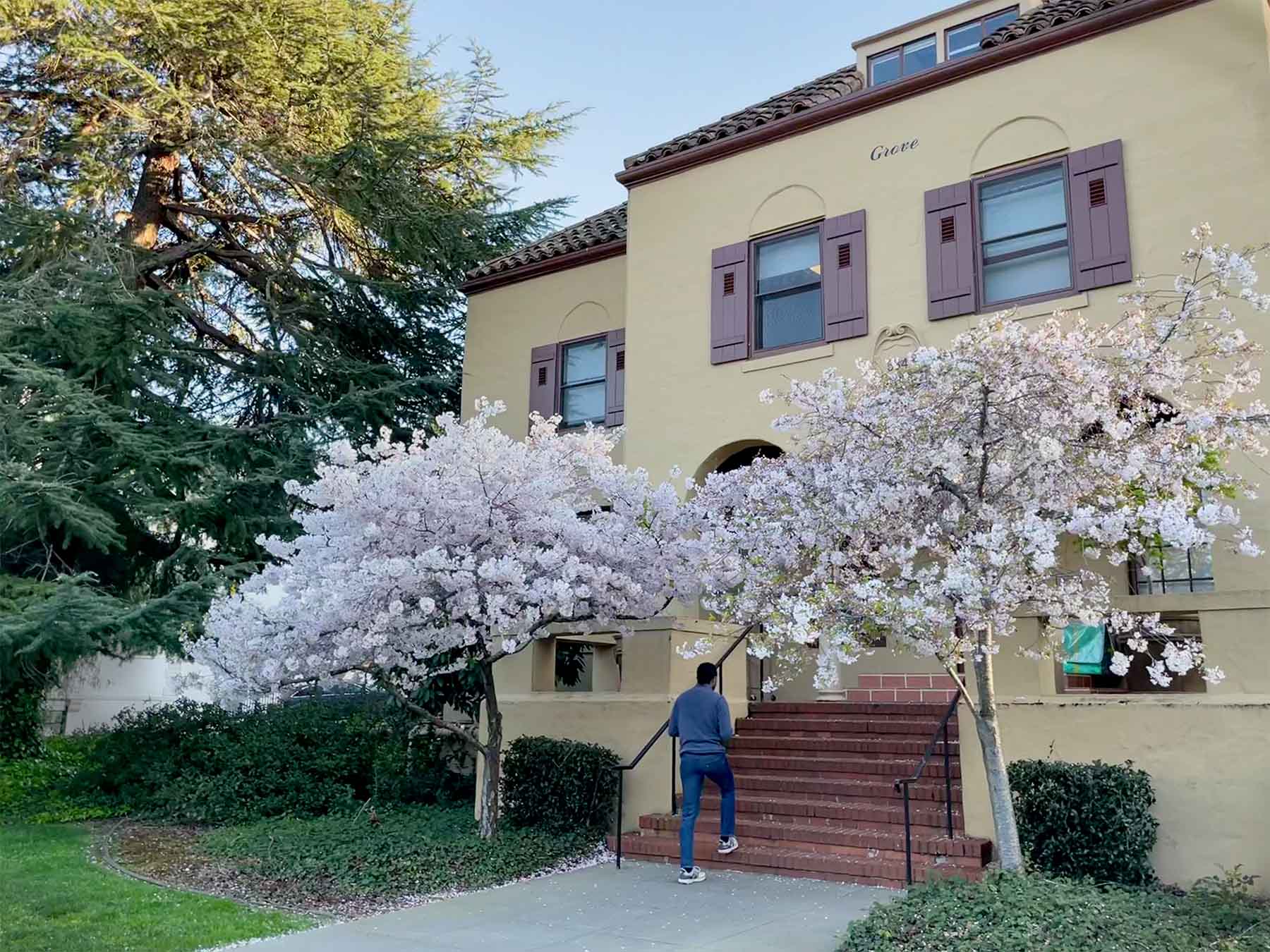Prunus × yedoensis
 Yoshino flowering cherry
Yoshino flowering cherry
The predominant tree in cherry blossom (sakura) festivals across Japan, its mighty front of delicate bloom starts in the south in February and ripples northward ending in early May. Tokyo’s much-anticipated forecast hovers around late March to early April, approximating our own. At Stanford, expect to see Yoshino cherry in full bloom, or getting there, on returning from spring break. The pink flower buds open into faintly pink blossoms, white when fully opened, though the flower buds along with the reddish calyx cups continue the overall impression of pale pink. The crowns are pleasantly wide, quite suitable for lounging under or for extending over a canal embankment, though trees in these parts don’t attain great size.
Two small Yoshino cherries flank the entrance to Grove (584 Mayfield Avenue); two others are down the street at 658 Mayfield. Find some at the entrance to the Humanities Center on Santa Teresa Street (1952), and others between Forsythe Hall and Via Orgeta Garage among the Chinese fringe trees.
Most of the cherries in Washington DC’s Potomac Park are of this species, a gift from the mayor of Tokyo in 1912. A hybrid unknown in the wild, the common variety of Prunus × yedoensis is known in Japan as ‘Somei-yoshino’. Cultivar ‘Akebono’ – selected by W.B. Clarke nursery of San Jose, California in 1912 – blooms a bit later and is said to be slightly pinker. Curiously, a reduced petal-like stamen emerges from the center of one in every few dozen of its flowers and serves as an additional characteristic of this variety. See small but floriferous ‘Akebono’ specimens in the circular planter in the back patio of Tresidder Union and among the avocados behind Margaret Jacks Hall. A larger specimen rises above the low fence at the entrance to Bing Nursery School. Two are in Gamble Garden in Palo Alto.
About this Entry: Authored Apr 2024 by Sairus Patel.




